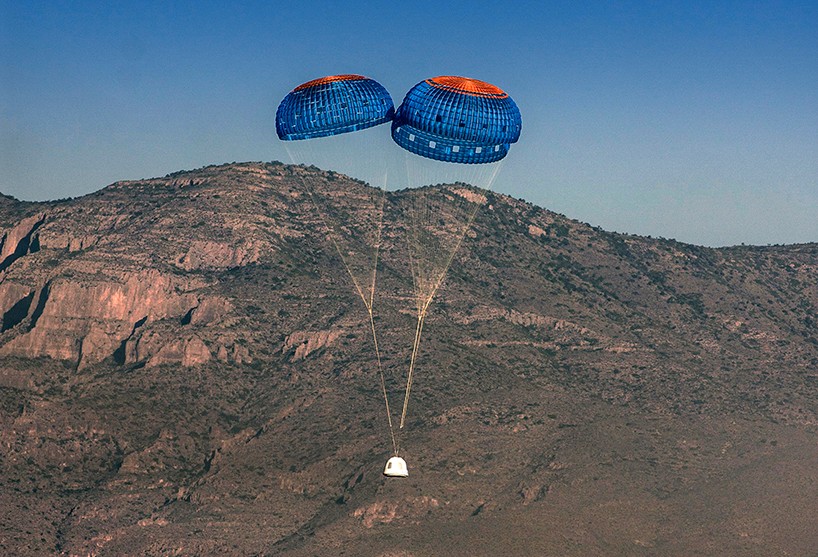


The apogee should be around 351,100 feet in altitude. RSS First Step, along with the crew inside, then reached their apogee–the maximum altitude during flight–around four minutes into the flight. Once the spacecraft passed above 100 km, the crew met most of the definitions of becoming astronauts. The line was named after the Hungarian-American engineer, Theodore von Kármán, and is generally used to divide aeronautics and astronautics. The capsule then crossed the Kármán line, which is situated at 330,000 feet, 100 kilometers, or 62 miles in altitude. At this point, the crew was around 262,400 feet in altitude. At around the same time, the space tourists on board began to experience the zero-gravity (Zero-G) environment. The capsule and the New Shepard Propulsion Module then separated around 20 seconds later. New Shepard was situated at around an altitude of 182,700 feet, and it continued to ascend. The capsule was fitted with an abort system powered by a single solid rocket motor known as the Crew Capsule Escape Solid Rocket Motor (CCE SRM) built by Aerojet Rocketdyne.Īt around two minutes and 20 seconds after launch, the single BE-3 engine shut down–a milestone known as Main Engine Cut Off (MECO). At this point, the launch vehicle was at an altitude of around 21,400 feet. During this time, the BE-3 engine throttled down. The BE-3 subsequently spooled up, and the launch vehicle lifted off from Launch Site One at around T+7 seconds.Īround 57 seconds after launch, New Shepard went through the region of Maximum Dynamic Pressure, also known as Max-Q. The engine operates in the combustion tap-off cycle.

The BE-3 runs on Liquid Oxygen (LOX) and Liquid Hydrogen (LH2). After arrival, they climbed the launch tower and were helped into the RSS First Step spacecraft.Īt T-0, the single BE-3 engine on the main booster of New Shepard ignited. Prior to launch, the crew were driven to Launch Site One in Rivian trucks. NASA shared the complete detail of the launch of the NS-22 rocket from the lift-off to the landing.
BLUE ORIGIN ROCKET LANDING TODAY FULL
View Full Image Blue Origin New Shepard NS-22 Mission (NASA)


 0 kommentar(er)
0 kommentar(er)
